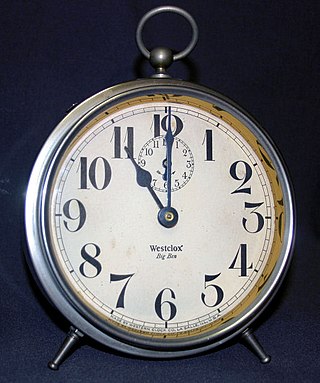12-hour clock
time counting system, divided into two parts: AM and PM From Wikipedia, the free encyclopedia
Remove ads
The 12-hour clock is a way of dividing the 24 hours of the day into two sections. The two halves are called ante meridiem (a.m.) and post meridiem (p.m.). Both names are from Latin and ante meridiem, means "before midday" and post meridiem means "after midday".[1]

Each period has 12 hours and are numbered 12 (acting as 0), 1, 2, 3, 4, 5, 6, 7, 8, 9, 10 and 11. Time from midnight to one minute before noon is a.m. and from noon to one minute before midnight is p.m.. The table at right shows how it relates to the 24-hour clock.

24-hour
Both in common use
12-hour
The 12-hour time is common in several English-speaking countries and former British colonies (such as the United Kingdom, the United States, the English speaking parts of Canada or India), as well as a few other countries. There is no widely accepted convention for how midday and midnight should be represented: in English-speaking countries, "12 p.m." means 12 o'clock noon, while "12 a.m." means 12 o'clock midnight.[2][3][4]
Remove ads
References
Related pages
Wikiwand - on
Seamless Wikipedia browsing. On steroids.
Remove ads
